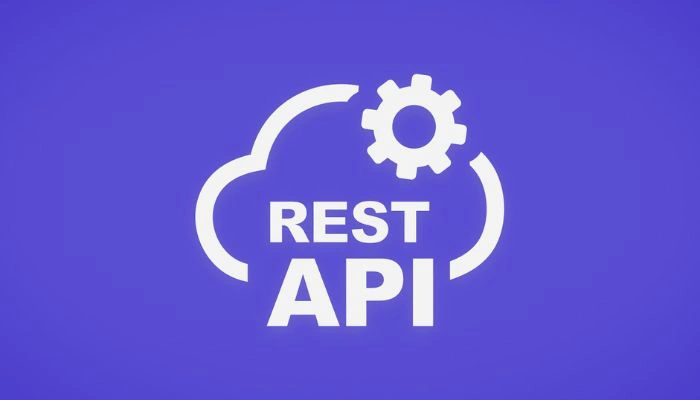Migrating a Website to Cloud DevOps A Comprehensive Guide
Migrating a website to cloud DevOps can be a daunting task for many businesses. However, with the right knowledge and preparation, it can be a smooth and successful process. Cloud migration can offer numerous benefits, including increased scalability, flexibility, and cost savings, which make it an attractive option for businesses of all sizes. In this article, I will provide an overview of the cloud migration process and discuss key considerations for planning and executing a successful migration.

Understanding cloud migration is the first step in the process. It involves moving an application or website from on-premises infrastructure to a cloud-based infrastructure. Cloud platforms, such as Microsoft Azure, offer a range of services that can be used to host and manage applications, databases, and other resources. However, migrating to the cloud requires careful planning and execution to ensure that the transition is smooth and does not disrupt business operations.
Key Takeaways
- Understanding cloud migration is essential for a successful migration process.
- Planning and preparation are critical to ensure a smooth and successful migration.
- Post-migration considerations, such as monitoring and optimization, are necessary to ensure ongoing success in the cloud.
Understanding Cloud Migration

As businesses continue to modernize their IT infrastructure, cloud migration is becoming increasingly popular. Cloud migration refers to the process of transferring applications, data, and other IT resources from on-premises infrastructure to cloud-based environments.
Cloud migration offers a range of benefits, including greater flexibility, lower costs, and increased workload reliability. By migrating to the cloud, businesses can take advantage of deployment options such as public, private, and hybrid clouds, each tailored to suit specific business requirements.
However, cloud migration can be a complex process that requires careful planning and execution. It involves several phases, including assessment, planning, migration, and optimization.
During the assessment phase, businesses should evaluate their current infrastructure and identify which workloads and applications are suitable for migration. They should also assess their compliance and security requirements to ensure they are met in the cloud environment.
In the planning phase, businesses should create a migration plan that outlines the steps necessary to move their workloads and applications to the cloud. They should also identify any dependencies and potential disruptions that may arise during the migration process.
During the migration phase, businesses should execute their migration plan and transfer their data and applications to the cloud environment. This may involve using migration tools such as Azure Migrate, which can help automate the migration process.
Finally, during the optimization phase, businesses should ensure that their workloads and applications are running smoothly in the cloud environment. This may involve right-sizing their infrastructure, optimizing their databases, and monitoring their performance.
Overall, cloud migration can be a complex process that requires careful planning and execution. However, with the right tools and guidance, businesses can successfully migrate their workloads and applications to the cloud and take advantage of its many benefits.
Planning and Preparing for Migration

Migrating a website to cloud DevOps requires careful planning and preparation to ensure a successful migration. Here are some key steps to follow:
Assess Your Digital Estate
Before beginning the migration process, it is important to assess your digital estate. This includes taking an inventory of all your applications, virtualized servers, source code, and databases. You should also identify any dependencies between these components.
Create a Migration Plan and Checklist
Once you have assessed your digital estate, you can begin creating a migration plan and checklist. This should include a detailed timeline for each step of the migration process, as well as a list of tasks that need to be completed. This will help ensure that you stay on track and don't miss any important steps.
Determine Compatibility Issues
During the planning phase, it is important to determine any compatibility issues that may arise during the migration process. This includes assessing whether your applications and databases are compatible with Azure SQL Database or Azure SQL Managed Instance. You should also consider whether any of your applications or databases require reserved instances or Azure Hybrid Benefit.
Test Migration
Before migrating your entire digital estate, it is important to perform a test migration. This will help identify any compatibility issues or bugs that may arise during the migration process. You should also test throughput and SQL Server instances to ensure that they are running smoothly.
Consider Automation
Automation can help streamline the migration process and reduce the risk of errors. Consider automating tasks such as inventory collection, database import settings, and import specification file creation. You can also use Azure VMware Solution to automate the migration of VMware workloads to Azure.
Project Management
Effective project management is critical to a successful migration. You should assign roles and responsibilities, establish communication channels, and create a project plan with clear milestones and deadlines. This will help ensure that everyone is on the same page and that the migration stays on track.
Consider Regulatory Compliance
If you work in a regulated industry, you will need to consider regulatory compliance when migrating to cloud DevOps. This includes ensuring that your data is secure, complying with data retention requirements, and ensuring that your applications and databases meet regulatory requirements.
Pros and Cons
Migrating to cloud DevOps has many benefits, including increased scalability, flexibility, and cost savings. However, it also has some drawbacks, including compatibility issues, potential downtime, and the need for new skills and training. It is important to carefully weigh the pros and cons before making a decision.
Return on Investment (ROI)
Migrating to cloud DevOps can be expensive, but it can also provide significant cost savings in the long run. It is important to calculate the ROI of the migration to ensure that it is financially feasible.
Azure Active Directory and Synchronization
Azure Active Directory can be used to manage user identities and access to resources in the cloud. It is important to set up synchronization between your on-premises Active Directory and Azure Active Directory to ensure that users can access resources in the cloud. You can also use Team Foundation Version Control to manage code changes and Azure Active Directory to manage user access.
Executing the Migration

Now that we have assessed our website and determined that migrating it to cloud DevOps is the best solution, it's time to execute the migration. This process involves moving our website from its current infrastructure to an Azure DevOps Services platform.
To start, we need to determine the most appropriate migration method. We can use the data migration tool for Azure DevOps to migrate our collection databases from Azure DevOps Server to Azure DevOps Services. This tool provides a high fidelity way to migrate data, including work items, source code, and other artifacts. Alternatively, we can use third-party tools or project management tools to assist with the migration.
Once we have chosen our migration method, we need to consider the security and compliance implications of the migration. We must ensure that our data is protected during the migration and that we comply with any relevant regulations. We should also consider the cost of the migration and any ongoing maintenance and licensing costs.
Next, we need to plan the migration itself. This involves identifying any dependencies or disruptions that may occur during the migration process and creating a migration plan that addresses these issues. We should also perform an inventory of our current infrastructure and identify any compatibility issues that may arise during the migration.
During the migration, we should use automation tools to help ensure a successful migration. We should also test the migration thoroughly to identify and fix any bugs or issues before we move to the cloud.
Once the migration is complete, we should modernize our website to take advantage of the features and benefits of the cloud platform. This may involve updating our applications, optimizing our workloads, and using Azure DevOps Services to streamline our development and deployment processes.
Overall, migrating our website to cloud DevOps can provide significant benefits, including improved performance, scalability, and collaboration. By following a careful migration plan and using the right tools and techniques, we can ensure a successful migration and achieve a positive ROI.
Post-Migration Considerations

After successfully migrating a website to the cloud using DevOps, there are several important considerations to keep in mind. These considerations include security, cost, performance, deployment, maintenance, licenses, apps, SQL Server, assistance, identity, import.json, historical data, Azure migration, right-sizing, VMware solution, Cloud Adoption Framework, disruptions, virtualized servers, throughput, SQL Server instances, Azure SQL Database, reserved instances, Azure Hybrid Benefit, compatibility issues, collaboration, inventory, collection databases, import settings, import specification file, third-party tools, project management tools, Azure VMware Solution, Azure SQL Managed Instance, schema, technical documentation, releases, customer support, move to the cloud, modernizing, work items, test migration, pros and cons, automation, successful migration, ROI, regulated industries, project management, bugs, Team Foundation Version Control, Azure Active Directory, synchronization, and TFVC.
One of the most important considerations is security. It is essential to ensure that all security measures are in place and functioning correctly after the migration. This includes implementing firewalls, access controls, and encryption protocols to protect both data and applications.
Cost is also an important consideration, as cloud migration can be expensive. It is important to carefully analyze costs and optimize usage to ensure that the migration is cost-effective in the long run. This may include using reserved instances, taking advantage of the Azure Hybrid Benefit, and right-sizing virtual machines.
Performance is another key consideration. After the migration, it is essential to monitor the website's performance and identify any bottlenecks or areas for improvement. This may involve tweaking settings, optimizing throughput, and analyzing SQL Server instances.
Deployment and maintenance are also important considerations. It is important to have a solid deployment strategy in place and to ensure that maintenance tasks are performed regularly to keep the website running smoothly. This may involve using automation tools, project management tools, and technical documentation to streamline processes and reduce errors.
Assistance and identity are also important considerations. It is essential to have a solid support system in place and to ensure that users have the appropriate access and permissions to perform their tasks. This may involve using Azure Active Directory, synchronization tools, and import.json files to manage user accounts and permissions.
Finally, it is important to carefully analyze the pros and cons of cloud migration and to ensure that the migration is successful in terms of ROI, modernization, and compliance with regulations in regulated industries. This may involve conducting a test migration, collecting inventory data, and working closely with customer support to address any issues or bugs that arise during the migration process.
Frequently Asked Questions

How do I migrate from on-premise to cloud?
Migrating from on-premise to cloud can be a complex process, but it can be made easier by following a few best practices. First, you should evaluate your current infrastructure and determine which applications and services are suitable for migration. Once you have identified these, you can begin planning your migration and selecting the appropriate cloud provider. You should also consider using DevOps tools to streamline the migration process and ensure that everything runs smoothly.
What is the process for migrating a website to cloud DevOps?
The process for migrating a website to cloud DevOps can vary depending on the specific requirements of your website and your organization. However, there are some common steps that you should follow. First, you should evaluate your current website infrastructure and determine which components are suitable for migration. Once you have identified these, you can begin planning your migration and selecting the appropriate cloud provider and DevOps tools. You should also consider testing your website thoroughly before and after the migration to ensure that everything is working as expected.
What are the benefits of migrating to cloud DevOps?
Migrating to cloud DevOps can bring a number of benefits to your organization, including increased scalability, flexibility, and agility. Cloud DevOps also allows you to take advantage of the latest technologies and services, which can help you to improve your website's performance and functionality. Additionally, cloud DevOps can help you to reduce costs and improve your overall efficiency by automating many of your development and deployment processes.
How do I migrate test cases from TFS to Azure DevOps?
Migrating test cases from TFS to Azure DevOps can be a complex process, but there are several tools and resources available to help you. One popular tool for migrating test cases is the Azure DevOps Migration Tool, which allows you to migrate test cases, test plans, and test suites from TFS to Azure DevOps. You can also find helpful documentation and tutorials on the Azure DevOps website.
What is the DevOps migration approach?
The DevOps migration approach involves using DevOps tools and practices to streamline the migration process and ensure that everything runs smoothly. This approach typically involves a number of steps, including evaluating your current infrastructure, planning your migration, selecting the appropriate cloud provider and DevOps tools, testing your applications and services, and optimizing your new environment for performance and scalability.
What are the best practices for migrating to cloud DevOps?
There are several best practices that you should follow when migrating to cloud DevOps. First, you should evaluate your current infrastructure and determine which components are suitable for migration. You should also plan your migration carefully and select the appropriate cloud provider and DevOps tools. Additionally, you should test your applications and services thoroughly before and after the migration to ensure that everything is working as expected. Finally, you should optimize your new environment for performance and scalability by using best practices such as automation, monitoring, and continuous integration and deployment.









